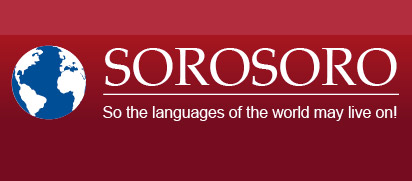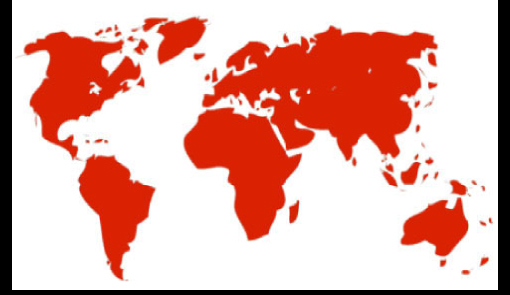Print  |
|


Bororo
Data collected by UNICEF
Data on the Bororo language
Alternative names: borôro, bororo oriental, coxiponé, araripoconé, araés, cuiabá, coroados, porrudos, boe, boe wadaru.
“Bororo” means “the people’s court”, the place in the Village where ceremonies take place. Although originating from Bororo, this name is an exo-ethnonym (name given by existing populations outside of the ethnic group), but it’s the most used name now-a-days. “Boe” refers to the self-naming of the people, “boe wadaru” refers to the self-naming of the language
Classification: phylum Macro-Jê, bororo language.
Bororo is the last surviving Bororo language. All the other languages of this group have disappeared after colonization between the 18th and 20th centuries. Umutina was the last language to go extinct after the death of its last speaker in 1988.
Rodrigues (1999) linked the Bororo languages to the Jê languages as well as to other small language families and isolates, in one “super-family”, macro-jê.
Geographical Area: Brazil, State of Mato Grosso, 6 indigenous territories, occupying a discontinuous space in the extreme southwest of the state: Merúri, Tadarimana, Perigara, Sangradouro, Teresa Cristina and Jarudori.
There probably are speakers to the East of the town of Aragarças, in the State of Goiàs.
Western Bororo disappeared at the end of the 20th century; the last speakers were in Bolivia. The language is no longer spoken.
The traditional Bororo territory was 600 times what it is today, stretching from Bolivia (to the West), to the State of Goiàs (to the East), to the banks of the tributaries of the Xingu and of the Miranda to the North and South.
Number of speakers: According to the ISA, there are 1571 Bororos (FUNASA, 2010). It seems almost all are speakers of the ancestral language.
Status: No official status.
According to Linguamón, “Portuguese is the only official language of Brazil. The current language legislation for other languages concerns only the educational realm, especially bilingual and intercultural primary education (exclusively in indigenous communities). In reality, there are very few qualified bilingual teachers.”
Vitality and transmission: According to UNESCO, Bororo is an endangered language.
Language transmission is however assured, and the entire eastern Bororo population is bilingual in Bororo and Portuguese. Bororo is the preferred language for informal communication within communities. Portuguese remains however, the language of prestige, and the youth are increasingly reluctant to use their ancestral language
The survival of the last Bororo language is almost a miracle. Eastern Bororos have put a lot of energy in keeping their language alive as well protecting the parts of their culture that is essential to their identity.
Teaching: Up to the 1970’s, teaching was in the hand of the Salesian missionaries and was only in Portuguese. Claims and demands from the Bororos in the 1970’s drove the missionaries to back-up and offer a bilingual education still in place today.
Historical details
The first contact with the colonizers was in the 17th century when the Jesuits missionaries arrived. In the eighteenth century, gold mining was developed in the region. Under the pressure of the garimpeiros (gold diggers), the Bororos split in two groups, Eastern Bororos (or Coroados) and Western Bororos (or Campanhas). They never reconnected.
The Western Bororos disappeared during the second half of the 20th century (In Bolivia, only 4 were left in 1970). Eastern Bororos were isolated until the mid 19th century when a road was built to connect Mato Grosso to São Paulo and Minas Gerais. This road went through the São Lourenço valley where the Bororos lived. The building of this road gave rise to the most violent conflict in the history of colonization in Mato Grosso. During 50 years, a full-fledge war opposed the Bororos to the State, until the Bororos finally surrendered. When the war against the State was over, it was the diamond hunters turn to invade the region, destroying the environment and causing new conflicts with the Bororos.
“Pacification” of the Bororos was then entrusted to the Salesian missionaries. This “pacification” and the Christianization of the Bororo people have greatly contributed to the near extermination of the cultural and linguistic Bororo community in Brazil.
In other words, one can say that encounter with western society has resulted not only in the loss of most of the Bororo territory; it has also resulted in the near-extinction of its People.
The Bororo population is thought to have been close to 10 000 in the 19th century. In 1979, Salesian census counted 626 Bororos.
If population numbers have increased since the 1980’s (1571 in 2010), damages suffered by the Bororos are huge.
The survival of the Bororo ethnic group as a whole was very precarious at one time. Although the situation seems a little less desperate now, threats to the Bororo language and culture have not altogether disappeared.
Ethnographic details
The Bororos are one of the Brazilian peoples studied by Claude Lévi-Strauss, who stayed in the village of Kejara in 1935. There is an extensive ethnographic literature about the Bororos, in comparison to which linguistic publications appear to be relatively few.
The traditional political unit of the Bororos is the village (Bo Ewa). The village is a group of houses built in a circle at the center of which there is the men’s house (Baito). To the west of the Baito there is the ceremonial court (the Portuguese named the Bororo after this court) where the main Bororo ceremonies are held.
Traditional ceremony is organized around 8 matrilineal clans divided in 2 exogamous halves (one can only marry someone from a clan belonging to the other half than the half one’s clan belongs to) called Exerae and Tugarége.
The traditional political structure is centered around 3 main roles: the Boe eijemera, the traditional war lord and village representative; the Bári, the shaman of the spirits and nature and the Aroe Etawarare, shaman of the dead souls. Today, the Boe eijemera represents his village in relations with the outside world, as well as with Brazilian society. In less traditional villages, the Boe eijemera is now elected.
The traditional Bororo economy was based on hunting, fishing, gathering and “slash and burn “agriculture. With the “pacification”, the Bororo ceased to be nomads and there is no more gathering. Hunting and fishing although still existing, have greatly suffered from the decrease in animal population and environmental degradation. Slash and burn agriculture has therefore become the main livelihood activity.
To this we can add the sale of handicrafts to tourists (increasing numbers of tourists are coming to this area) and the occasional farm work outside the village.
The Bororos are a remarkable example of active resistance to the cultural pressure of national society. The persistence of ritual funerary practices (during which all economic activity is suspended) perfectly illustrates the Bororo’s strong will to resist assimilation. In the words of the anthropologist Sylvia Caiuby Novaes (1993): “Through these rituals, the Bororo’s transgress the order that the outside world is trying to impose on them and fight their forced integration in national society.”
How much longer will the Bororo society, threatened by environmental degradation and poor sanitary conditions, victims of infectious disease and alcoholism, be able to maintain its cultural and linguistic identity? Nothing can guarantee their survival as an ethnic group in the medium term
For further information on the Bororo’s, see the pages dedicated to them on the ISA website, Povos Indígenas no Brasil.
As well as Claude Lévi-Strauss’ work, of course.
Sources
Castro Alvès, Flavia de (2010) Brazil Amzónico. In « Atlas sociolingüístico de pueblos indígenas en América Latina », UNICEF. Tome 1, Pp 245- 264
Fabre, Alain. 2005. Diccionario etnolingüístico y guía bibliográfica de los pueblos indígenas sudamericanos. Available online [28/07/2011]
On-line sources
Data collected by UNICEF aout the bororo language [28/07/2011]
Pages dedicated to the Bororo’s on the Povos Indígenas no Brasil website (in english/portuguese) [28/07/2011]
Page dedicated to the Bororo on the Linguamón website [28/07/2011]
Additional bibliography
Novaes, Sylvia Caiuby. 1993. Jogo de espelhos: imagens da representação de si através dos outros. São Paulo: EDUSP.
Lévi-Strauss, C. 1936. « Contribution à l’étude de l’organisation sociale des Indiens Bororo », Journal de la Société des Américanistes, 28-2, 269-304.
Lévi-Strauss, C. 1955. Tristes Tropiques, Paris, Plon.
Pudlowski, Charlotte. 2009. Que sont devenus les Bororo?, Slate.fr.
Rodrigues, Ayron D. 1999. « Macro-Jê » In R.M.W. Dixon and Alexandra Y.Aikhenvald, (eds) The Amazonian languages, Cambridge University Press.
Rodrigues, Aryon D. 2007. « O parentesco genético das línguas Umutina e Boróro ». In: A.D. Rodrigues & A.S.A.C. Cabral (eds.), Línguas e culturas Macro-Jê: 9-18. Brasília: Editora da UnB.
Serpa, Paulo Marcos N. 2001. Bororo
Viana, Adriana M.S.2003. Morfossintaxe da língua Boróro. Exame de Qualificação. Brasília: UnB (ms.)
See the Atlas sociolingüístico de pueblos indígenas en América Latina et Fabre (2005) for a more complete biography.
Please do not hesitate to contact us should you have more information on this language: contact@sorosoro.org








